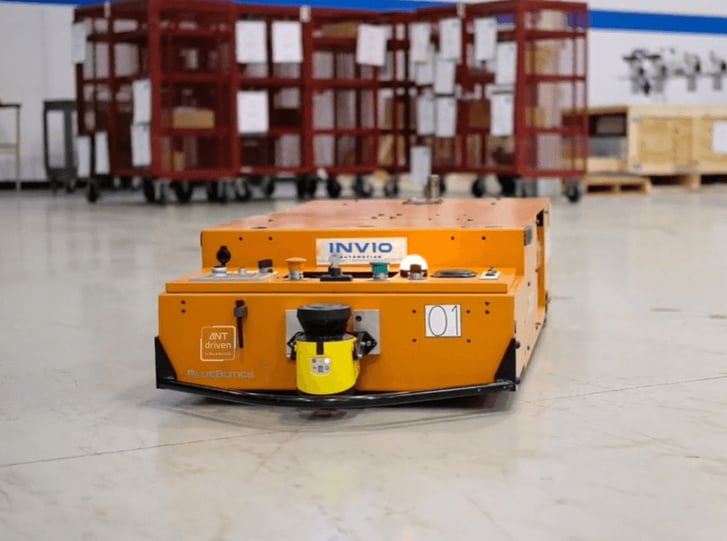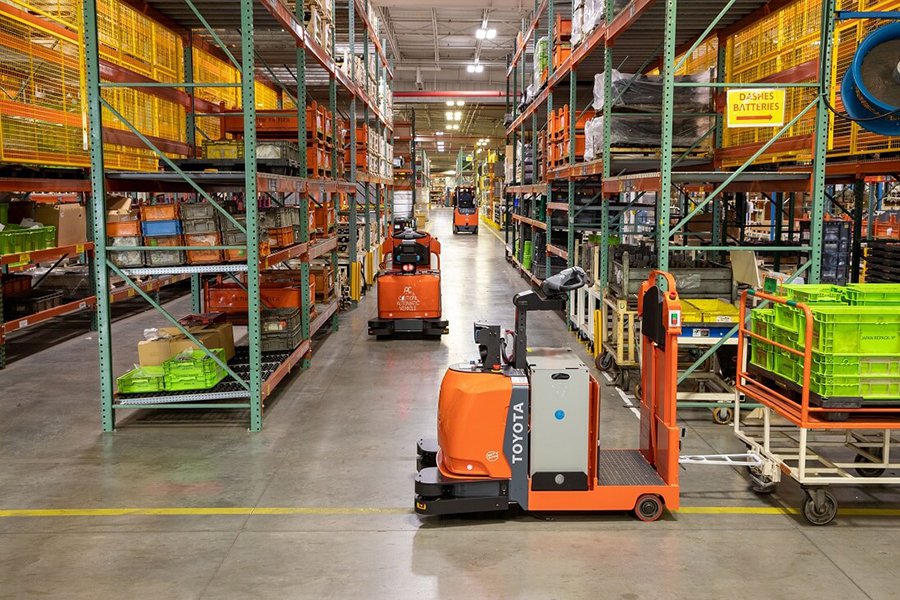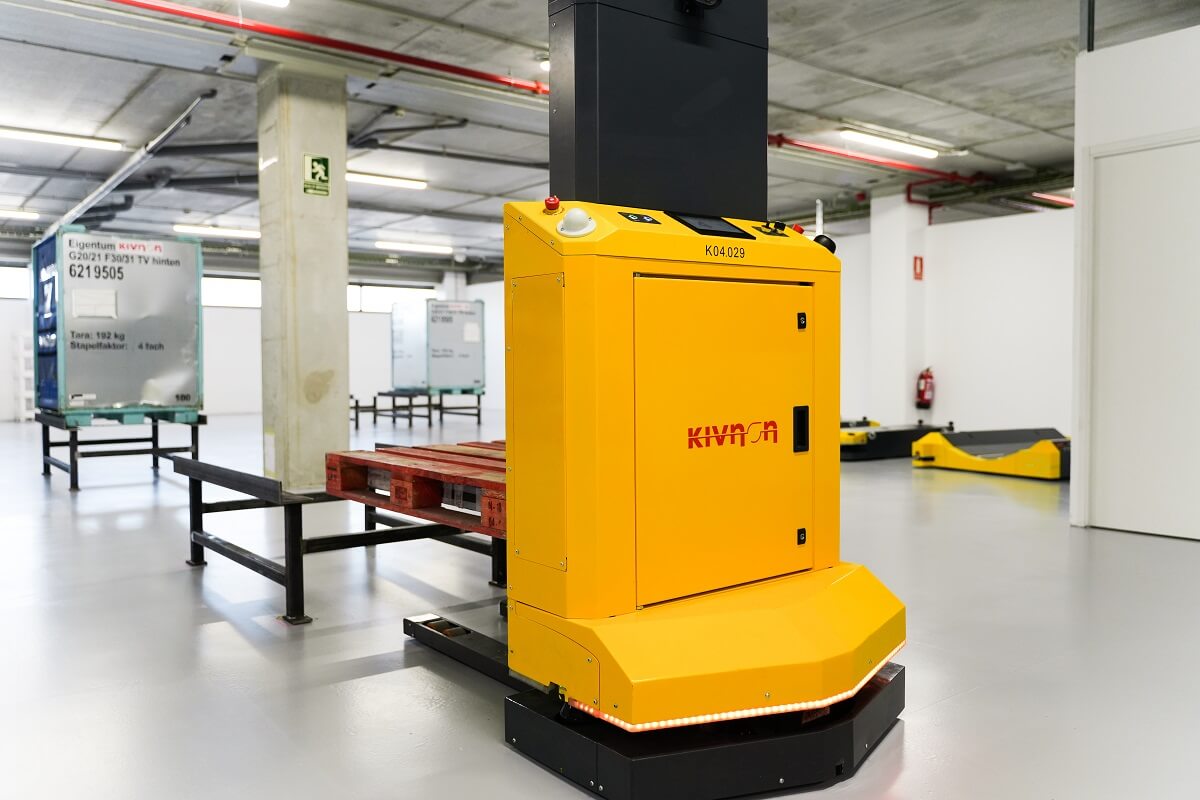Are you considering - or have you been tasked with - an AGV or AMR project, but are unsure how to begin? Perhaps you are struggling with which process to automate first, or how to measure the potential impact of this technology adoption?
To answer these questions and more we spoke with the following mobile robotics experts. Below is what they had to say...

What type of tasks and processes are most commonly automated with AGVs and AMRs?
Michael Marcum (Bastian Solutions - A TOYOTA ADVANCED LOGISTICS company): Most of our customers’ applications fall into two categories within manufacturing applications. The first is assembly lines, with the AGV serving as an indexing line, interlocked to the customer’s manufacturing execution system (MES) for “no fault forward” of the product. No fault forward manufacturing is the operational strategy of catching mistakes when and where they occur in the manufacturing or assembly process through connected monitoring and communication. Every step of production is checked and must pass inspection (via sensors, cameras, etc.) in order to move to the next step.
The second most utilized application is for material delivery to production lines or shipping areas.
Jeff Chu (Invio Automation): Invio Automation AGVs are deployed in a diverse range of industries including electric vehicles and automotive, renewable energy, aerospace, defense, e-Commerce and fulfillment, as well as general manufacturing and heavy industry.
Many customers utilize AGVs for assembly line conveyance. Here, AGVs are increasingly the solution of choice in heavy-weight applications (i.e. product forms exceeding 10,000 lbs or 4.5 tons) compared to traditional 'chain-in-the-floor' tow lines.
Other processes where we see AGVs being used include automated material deliveries such as moving materials autonomously from warehouse or kitting areas to the line, or from fabrication to assembly.
Thierry Delmas (Kivnon): The tasks and processes that can be automated with AGVs/AMRs are continuously expanding. From space-crunched indoor applications to more and more outdoor applications, technological advancements like improved sensor technology and vehicle autonomy are enabling more possibilities. At Kivnon our R&D department constantly works to develop new technologies that respond to current and future challenges. Our mobile robotics solutions today automate many different applications, spanning the automotive, food and beverage, logistics and warehousing, manufacturing, and aeronautics industries.
What usually motivates companies to adopt automated vehicles?
Chu: The motivation for using AGVs as the method for assembly line conveyance is driven by multiple factors, but primarily value is realized through, one, improved flexibility and two, improved safety and ergonomics.
AGVs are inherently highly flexible and configurable. For example, compared to a traditional tow-line where the path is fixed and each station is coupled to the station prior, AGVs are able to be programmatically assigned a new route depending on the process design.
Take a multi-model assembly environment as an example: AGV users could design a line with divergent flows depending on model variability. This may manifest as a process where an AGV flows through initial assembly areas common to all models, but then branches to a new path for later stations where the assembly activities vary to an extent where it’s beneficial to split the line. This type of process design is not possible with a fully coupled tow-line.

Another key value proposition of AGVs on the assembly line is the ability to de-couple work stations. While all manufacturers strive for a perfectly balanced line, variability inevitably bottle-necks one station at the expense of those behind it. We are increasingly seeing manufacturers design their assembly lines with in-process kanbans (IPKs), or buffers, to help smooth over the intra-station variability. In an AGV-based line, once work-content is completed, the AGV can progress into the buffer even if the station ahead is blocked. This is a major advantage compared to the synchronous towline.
As far as safety is concerned, compared to a tow-line where risks of stopping a cart from an unintended collision are mitigated by audible cues (more a warning, not an intervention) or pin-disengagement bars (which still result in a contact force), the sensing and navigation technology on AGVs can detect interferences in the path and programmatically stop before any contact occurs.
While from an ergonomics perspective, AGVs can be integrated with bespoke top-tooling like rotation trunnions, scissor lifts for adjustable work-heights, or rotating dial-tables to spin the product closer to the operator.
Delmas: The reasons to automate or deploy AGVs/AMRs vary with the customer's needs. More and more manufacturers, research firms, and companies are turning to automation to reduce costs and boost quality. Investing in new technology helps them to compete and to win new opportunities in different industries.
“Improved quality and cost reduction are key objectives they (customers) target with their automation strategies”
However, the need occurs most strongly if the business continuously has production issues or if its production methods fail to keep up with customer demands. Also if a business faces labor constraints owing to safety issues, absenteeism, and resignation, which keep employee costs high because of the need to train and rehire. Sometimes, if walkaround time is high for the workers, they end up losing valuable workable hours so this is a potential driver too.
Marcum: While we’re not able to define customer motivations, since they tend to be specific to their business goals, we can say that our customers have told us improved quality and cost reduction are key objectives they target with their automation strategies. Improved quality comes from careful load handling, precise navigational methods, and reliable safety ratings. Cost reduction derives from improved quality, but also from continuous operation capabilities and the ability to scale AGV operations alongside business needs.
Which processes does it make most sense to automate first and why? Where can a company have the largest impact?
Delmas: It is likely to be the simple ones that don’t need complex transformation but will improve existing processes and employee availability. The longer the transport distances, the more you can contribute to improving work times, worker well-being, and safety. It is better to use people when we want to bring value to a process and better to use AGVs when we don't.
But again, the impact is measured differently by everyone, in line with the requirements that motivated the business to go for mobile robotic solutions in the first place; this can be costs, workplace safety, efficiency, or others.
“It is better to use people when we want to bring value to a process and better to use AGVs when we don't”
Chu: AGVs are great candidates for automating processes that are inherently dangerous or don’t add value. Top of mind in most facilities is tasks where operators have to manually push large, wheeled equipment to move work-in-progress to the next processing step, or heavily-utilized fork-truck routes.
For the first use case, the manual indexing of bulky build-carts is potentially hazardous (pinch-points, uncontrolled motions, etc.) and does not add value. In the second use case, material delivery by fork-truck is highly labor intensive and hazardous. Replenishing line-side consumables or parts deliveries can be done autonomously, and reduces overall fork-truck traffic in the facility, which is often a source of near-misses or accidents.
Marcum: Processes that don’t require dynamic decision making and are monotonous or hard to staff are first level candidates for automation. By automating these tasks, companies improve employee ergonomics and morale, allowing employees to focus on more complex assignments. With less attention going toward hiring replacement or seasonal workers and onboarding them, companies can also realize savings outside of production costs.
![]()
Note - with the product extension ANT everywhere, AGVs and AMRs can move seamlessly between indoor and outdoor applications.
What type of automated vehicle is it easiest to start with?
Marcum: Low-profile tugger AGVs that provide horizontal movement but don’t lift the product are the easiest to start with. Designed to interact with standardized objects such as euro pallets, these systems can be integrated quickly and provide an immediate impact on operations.
Delmas: There is no one type. In general, it is the one that requires the least amount of change to the existing process. At Kivnon, we spend a lot of time understanding the customer’s requirements and infrastructure to offer value in the early phase. The customer might have a different perspective about where they want to start, but close evaluations of the various metrics we follow make it easier for the investor to identify the small steps they could take to extract desired value from the project.

Chu: Simple material delivery routes are often considered a quick-win opportunity to introduce AGVs. Take, for example, a facility that has fabrication in one area and assembly at the other side of the building. If two "stations" are created in each area to serve as collection points for all of the WIP materials, an AGV can easily drive from A to B to deliver the goods. It is highly common to see AGV tugger-trains that pull into a station, get loaded up in one area, and then autonomously drive to another area on a set cadence.
How can a company assess the potential impact of automating a specific process?
Chu: The ROI of AGVs is informed by improvements to both top and bottom-line metrics. From an increased sales perspective, AGVs offer a way to force a takt on an assembly process, which can ultimately lead to more predictable outputs that can be scaled up over time.
From a cost-savings lens, adopters must factor in benefits from labor, time savings, and safety/ergonomic improvements. While offsetting direct labor needs by automation is a more intuitive concept to grasp, time savings and safety and ergonomic improvements must not be overlooked.
By automating material drop offs and pick-ups, manufacturers can also realize ‘hidden’ benefits like standardizing the locations of where things are. How often do you observe workers simply looking for something? And on improving safety, while getting to zero incidents is a universal goal, many users don’t factor in the time savings from incident reporting either, or boosts to morale from having a safer environment overall.
Delmas: One thing that makes the evaluation simple is that any automation project is results driven. This is even more true for the application of mobile robotics. If workforce efficiency and safety are the top criteria for deploying AGVs, the impact will be visible. But it could equally be increased working hours, worker availability, or successfully eliminating accidents and fatalities. As for monetary ROI, breakeven on AGVs can be attained in less than a year.
Marcum: Companies considering AGVs should focus on how automation can create better stability, leading to improved quality, cost and safety. Product or material being moved, desired throughput rate, traffic flow and warehouse layout are just a few of the many details that play into determining the right solution.
It’s imperative to take the time to think deeply about how automation could change your current processes to avoid unintended consequences, such as resistance from your labor force, insufficient maintenance support, and interference with manual traffic.
How can a potential adopter of AGVs/AMRs optimize for success?
Delmas: An investor can optimize for success by choosing a vehicle integrator who is well-versed in evaluating their needs, processes, and benefits. It is easy to complicate and endanger the effectiveness of the project by overdoing things. A measured, expert approach will guide the investor through each step and set the business up for long-term success.
“With less attention going toward hiring replacement or seasonal workers and onboarding them, companies can also realize savings outside of production costs”
Marcum: Optimizing for success can sometimes feel daunting. So, start small and create standards so that you can scale up over time by leveraging what you learn on these small initial processes. It’s also important to choose a supplier who can support your operations with service, parts and support for years to come.
Chu: Optimizing for success often begins with simplifying processes. Automation projects can become overly complex and costly if too much variability exists within your system. However, many times companies can make small changes, whether to layout, schedule, or process design, that greatly help standardize, and enable automation.

What are some common mistakes to avoid when deploying mobile robotics?
Chu: A common hurdle to any form of automation, including mobile automation, is over reliance on "the way things are always done". Mobile automation, especially for assembly line applications, presents a new paradigm for flowing materials through a factory. Manufacturers should challenge themselves to think about what's possible, instead of replicating how things are historically done.

Delmas: A common mistake is incorrectly estimating the requirements and impact of the project. Yes, there might be more pressing issues you want to address at the start, but an integrator will study many factors before offering a solution. Before any automation, it is critical that they analyze, simplify, and standardize your processes.
Marcum: Trying to use too many different vehicles, featuring different navigation technologies, in your facility can become overly complex and challenging. As I mentioned before, starting small with simple tasks and expanding from there is a fail-safe method to integrate AGVs seamlessly into your operations.
How do your customers manage the arrival of AGVs and AMRs with their employees? How do they tackle the thorny issue of acceptance and what seems to work?
Marcum: As a first step, our customers automate processes that no one wants to do. This helps employees see automation as a benefit. If roles need to be repurposed, having a plan designed and communicated before AGV implementation is crucial. This creates open lines of communication with operators to get feedback on workflows, which leads to better utilization of the automation and higher acceptance.

Delmas: It all comes down to employee empowerment. Employees should see the benefits of introducing AGVs: they will allow staff to do more strategic work instead of heavy lifting; they will be able to use robots more like assistants to perform manual tasks that they once did; and the AGVs will help eliminate the accidents that endanger their livelihoods and future employment. Instead of fear of losing a job, it should be about the opportunities this technology opens through reassigning tasks.
“By automating material drop offs and pick-ups, manufacturers can also realize ‘hidden’ benefits like standardizing the locations of where things are”
Chu: Customers who prioritize collaboration and communication with their employees will have the best chance of seamless adoption. It’s especially important to recognize that automation is not meant to be malicious and take away someone's job, but to improve the overall workplace by creating a safer and likely more ergonomic day to day for all.
Ready to learn more?
If your business is considering mobile robotics, you may find our AGV Buyer's Guide and ROI Calculator useful. If you then have further questions, you can also contact our team direct.

